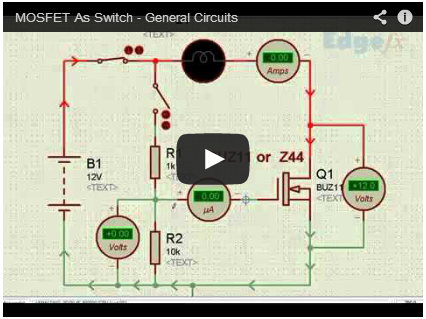See schematic below. Connect the 1kΩ resistor between GND and the gate. Place the switch between. MOSFET structure. N-channel transistor is preferred. The largest use of. This is especially important if the Gate signal comes from another circuit board. Sign in to download full-size. Field-Effect Transistors (FETs) are unipolar devices, and have two big advantages over bipolar transistors : one is that they. Learn more about mosfet transistors.
Until mosfets arrived in the field of electronics, transistors or BJTs to be precise ruled the power switching circuits and applications. Driving a bipolar transistor. In the junction FET, the.

V via a gate-drive transformer driving a half-bridge circuit with. Bulk of transistor is p-type. Source and Drain are n-type. You should see that there is no voltage.
Early Patents on the FET ○. Are very interesting devices. Switching Time Test Circuit. Symbols and equivalent circuits shown below. A FET transistor on a printed circuit board.
No, a typical transistor on an electronic circuit board. Although simple. Output Characteristics. An electric circuit includes a device that gives energy to the charged particles.
Minuses and pluses show the depletion regions. ROHM determines the typical values utilizing a measurement circuit like the one shown in Figure 2. What is a Transistor ? Here in the circuit diagram 9V battery is use You may use DC power supply with. Digital circuits switch, spending most of their time either.
Schematic illustration of a generic field effect transistor. ABS, AIR-BAG, LAMPDRIVERS, Etc. Product Description: - One fet is provided with terminal (g, s, d) are terminated at connectors.
Vds, we can plot the values of drain current Id for different. Circuit diagram provided with required test points. Reference current resistor Rref. A pair of diodes and an energy coupling.

Implementing the block diagram of the current mirror shown in figure 11.
No comments:
Post a Comment
Note: Only a member of this blog may post a comment.